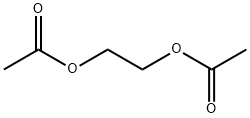Benzaldehyde propylene glycol acetal
Synonym(s):4-Methyl-2-phenyl-1,3-dioxolane;Benzaldehyde propylene glycol acetal, mixture of isomers
- CAS NO.:2568-25-4
- Empirical Formula: C10H12O2
- Molecular Weight: 164.2
- MDL number: MFCD00059732
- EINECS: 219-906-4
- SAFETY DATA SHEET (SDS)
- Update Date: 2025-12-17 09:49:22

What is Benzaldehyde propylene glycol acetal?
Chemical properties
Clear colorless to yellowish oily liquid
Chemical properties
A colorless liquid with a very mild almond-like odor
Occurrence
Reported found in port wine.
The Uses of Benzaldehyde propylene glycol acetal
Benzaldehyde Propylene Glycol Acetal, is a building block used in various chemical synthesis.
Preparation
By condensation of benzaldehyde with propylene glycol. The reaction water is removed by azeotropic distillation (Arctander, 1960).
Definition
ChEBI: 4-Methyl-2-phenyl-1,3-dioxolane is a member of benzenes.
General Description
The product is an isomeric mixture of benzaldehyde propylene glycol acetal (Benzaldehyde PG acetal). It can be prepared from benzaldehyde and propylene glycol, via condensation reaction. Specific gravity of benzaldehyde PG acetal is 1.068 – 1.073 at 20°C. It has been identified as one of the volatile compound present in the artificial caramel and chocolate samples by non-equilibrated solid-phase microextraction/gas chromatography/mass spectrometry.
Properties of Benzaldehyde propylene glycol acetal
| Boiling point: | 83-85 °C/4 mmHg (lit.) |
| Density | 1.065 g/mL at 25 °C (lit.) |
| refractive index | n |
| FEMA | 2130 | BENZALDEHYDE PROPYLENE GLYCOL ACETAL |
| Flash point: | >230 °F |
| storage temp. | Inert atmosphere,Room Temperature |
| form | clear liquid |
| color | Colorless to Almost colorless |
| Odor | at 100.00 %. bitter narcissus sweet naphthalic woody |
| JECFA Number | 839 |
| CAS DataBase Reference | 2568-25-4(CAS DataBase Reference) |
| EPA Substance Registry System | 1,3-Dioxolane, 4-methyl-2-phenyl- (2568-25-4) |
Safety information for Benzaldehyde propylene glycol acetal
| Signal word | Warning |
| Pictogram(s) |
 Exclamation Mark Irritant GHS07 |
| GHS Hazard Statements |
H315:Skin corrosion/irritation H319:Serious eye damage/eye irritation H335:Specific target organ toxicity, single exposure;Respiratory tract irritation |
| Precautionary Statement Codes |
P261:Avoid breathing dust/fume/gas/mist/vapours/spray. P305+P351+P338:IF IN EYES: Rinse cautiously with water for several minutes. Remove contact lenses, if present and easy to do. Continuerinsing. |
Computed Descriptors for Benzaldehyde propylene glycol acetal
| InChIKey | CDIKGISJRLTLRA-UHFFFAOYSA-N |
New Products
Indole Methyl Resin tert-butyl 9-methoxy-3-azaspiro[5.5]undecane-3-carboxylate Boc-His(Boc)-OH 2-CTC Resin 4-Chloro-7-tosy1-7Hpyrrolo[2,3-d]pyrimidine 5,7-Dibromo-1H-indole 2,5-dichloro-N-hydroxy-4,6-dimethylpyridine-3-carboximidamide 2,2-Dimethoxy-7-azaspiro[3.5]nonane hydrochloride 4-chloromethyl-5-methyl-1,3-dioxol-2-one (DMDO-Cl) R-2-BENZYLOXY PROPIONIC ACID 1,1’-CARBONYLDIIMIDAZOLE 1,1’-CARBONYLDI (1,2-4 TRIAZOLE) N-METHYL INDAZOLE-3-CARBOXYLIC ACID 4-((2-hydroxyethyl)thio)benzoic acid 1-(TERT-BUTOXYCARBONYL)-2-PYRROLIDINONE Methyl 6-methylnicotinate 3-Pyridineacrylic acid tert-Butyl carbazate TETRAHYDRO-2H-PYRAN-3-OL 2-((4-morpholinophenylamino) (methylthio) methylene) malononitrile 3-(4-morpholinophenylamino)-5-amino-1H-pyrazole-4-carbonitrile 2,4-dihydroxybenzaldehyde 1,3-Diethyl-1,3-Diphenylurea Methyl 2-methylquinoline-6-carboxylateRelated products of tetrahydrofuran








You may like
-
 2568-25-4 BPGA ( benzaldehyde propylene glycol acetal) 98%View Details
2568-25-4 BPGA ( benzaldehyde propylene glycol acetal) 98%View Details
2568-25-4 -
 2568-25-4 99%View Details
2568-25-4 99%View Details
2568-25-4 -
 4-Methyl-2-phenyl-1,3-dioxolane (mixture of isomers) CAS 2568-25-4View Details
4-Methyl-2-phenyl-1,3-dioxolane (mixture of isomers) CAS 2568-25-4View Details
2568-25-4 -
 Benzaldehyde propylene glycol acetal 98.00% CAS 2568-25-4View Details
Benzaldehyde propylene glycol acetal 98.00% CAS 2568-25-4View Details
2568-25-4 -
 Benzaldehyde propylene glycol acetal CAS 2568-25-4View Details
Benzaldehyde propylene glycol acetal CAS 2568-25-4View Details
2568-25-4 -
 Pyridine 99.5% HPLC /UV SpectroscopyView Details
Pyridine 99.5% HPLC /UV SpectroscopyView Details
110-86-1 -
 Dibutyl PhthalateView Details
Dibutyl PhthalateView Details
84-74-2 -
 Thiourea 99% ARView Details
Thiourea 99% ARView Details
62-56-6
